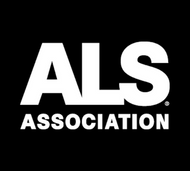Preparing for Emergencies When You Have ALS
Posted by Simplesa Team on 10th Jun 2015
Emergencies can be frightening and dangerous for anyone. When you have a chronic illness like ALS, natural disasters pose additional risks for those who have limited mobility or are homebound.
Recently, the ALS Association posted a wonderful Emergency Preparedness Checklist for People with ALS. One of the most important things to do is to be proactive in case of emergency. The ALS breaks it down for you suggesting to take the time and work to prepare as you will then feel less vulnerable if and when an emergency arises. These disasters could include natural disasters, home fires, acts of terrorism, or accidental occurrences.
ALS suggest your plans should include:
1. Know what kinds of disasters (especially weather/natural disasters) could happen in your area and consider what your environment might look like after one occurs. Sign up for alerts from FEMA or local weather sources. These alerts can be directly texted to a cell phone, a Facebook or Twitter account, or your home phone number.
2. Complete a personal assessment and personal support network of family, friends, relatives, neighbors, roommates and co-workers who could assist you at a moment's notice. Keep this list handy at all times.
3. Make an emergency information list so others will know who to call if they find you unconscious, unable to speak, or if they need to help you evacuate quickly.
4. Compile a medical information list that contains the names and numbers of your doctors, your medications, dosage instructions, and any existing conditions. Make note of your adaptive equipment, allergies, and any communication difficulties you may have.
5. Keep at least a seven-day supply of medications on hand. Ask your doctor or pharmacist what you should do if you cannot immediately get more.
6. Identify evacuation routes and safe places to go during a disaster. Remember that in the event of a natural disaster you may be under mandatory evacuation. Should this occur and you don’t have accessible transportation, call your local police department and inform them of your situation.
7. Keep a disaster supply kit, also known as a “go bag,” in your home, car, workplace or anywhere you may spend your time. Include such items as food, water, a first aid kit, adaptive equipment, and batteries.
8. Show others how to operate your wheelchair or other assistive devices.
9. Keep in mind that during an emergency, you may need to explain to first responders and emergency officials that you need to evacuate and shelter with your family, service animal, caregiver, or personal assistance provider so they can provide the support you need to maintain your health, safety and independence.
10. If you cannot verbally communicate, make sure you always have a Rapid Access Communication System in place. This could include a letter board, laser pointer, or other communication system that does not rely on electricity. You can find more information at www.
These recommendations are useful to anyone with any health condition or with limited mobility.
Please watch this Preparedness Video created by FEMA.
View in FEMA Multimedia Library
To receive text messages to receive alerts, tips, and shelter info on disasters please visit this FEMA Link:
http://www.fema.gov/text-
Other resources per the recent ALS Emergency Preparedness Article:
Prepare for Emergencies Now: Information for People with Disabilities http://www.ready.gov/sites/
Preparing Makes Sense for People with Disabilities and Other Access and Functional Needshttp://www.fema.gov/
http://www.alsa.org/als-care/

